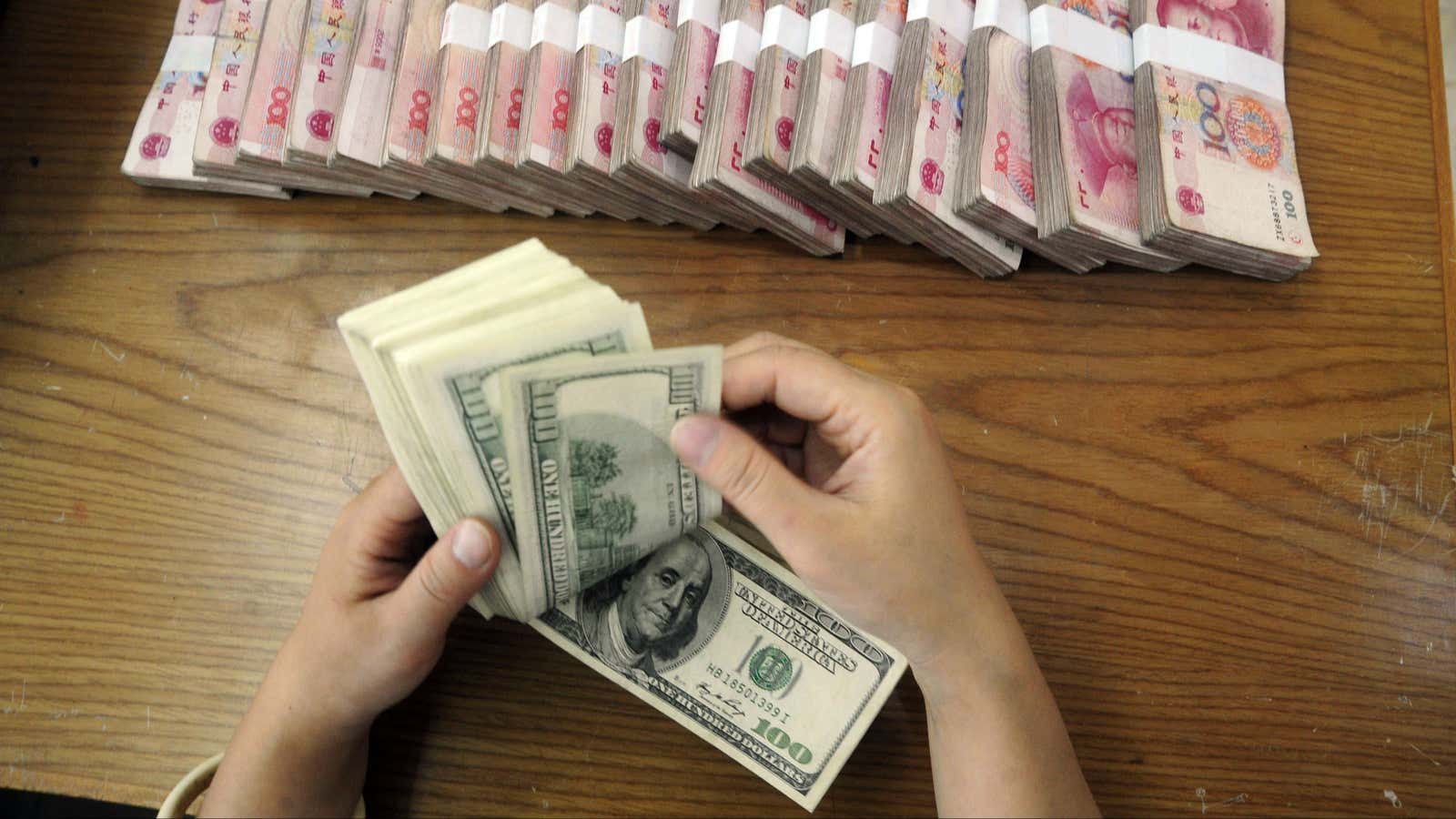China’s heaping hoard of foreign-exchange reserves once symbolized its economic might. At their peak, in June 2014, they reached just shy of $4 trillion—more money than the entire German economy made that year.
How times have changed. In January, China’s foreign-exchange reserves slipped to their lowest point in six years. Chinese investors, anticipating better returns in foreign assets, want to get their money out of the country. And the government is drawing down its reserves like crazy to try to keep those outflows from tanking the yuan.
But why the change in sentiment?
Let’s start with where those reserves came from in the first place. The central bank, the People’s Bank of China (PBoC), racked up the reserves by selling its own currency for dollars (and, to a lesser extent, other foreign currencies), which kept the yuan cheaper than its market value.
The government did this to make Chinese exports more competitive than those of other countries, and to boost its savings rate by making imports relatively more expensive. (This article explains that in more detail). Bowing to political pressure from the US, the PBoC did nonetheless let the yuan rise in value against the dollar starting in 2005. But again, as its foreign exchange reserves pile revealed, it was still suppressing its value.
This gradual rate of appreciation whipped up a self-reinforcing cycle. Investment flowed into China, partly on the bet that the PBoC would keep letting the yuan strengthen. And that forced the PBoC to buy even more dollars to prevent a surge in the yuan’s value.
As China’s economy slowed, this cycle reversed. Fearing the yuan they held would lose value, individuals and companies began swapping Chinese currency for foreign money. Since 2015, this has worked to push the yuan’s value down. Instead of buying dollars, the PBoC started selling them—shrinking China’s foreign-exchange reserves.
This all leaves the Chinese government in a tight place. It has intensified its efforts to plug up the channels through which capital is flowing out. But as January’s data show, that’s not working.
It could just stop controlling the yuan value altogether—and let the market set its value instead. But its window of opportunity to do that without angering the US, one of its biggest trade partners, slammed shut in November, when Donald Trump won the election. Since the yuan will almost certainly drop sharply in value if the PBoC lets it float, there’s a fair chance he would label the yuan’s decline a “competitive devaluation” and erect trade barriers to Chinese goods. Since China’s financial stability depends increasingly on its trade surplus, the Chinese government isn’t likely to run that risk.
But the real problem in China is its foot-dragging on reforming the structure of its economy. Contrary to what Trump maintains, the PBoC’s currency manipulation is making the yuan—and, therefore, Chinese exports—more expensive than they probably should be. What he should be criticizing instead is the Chinese government’s support of excess capacity in sectors like glass, cement, and steel.
